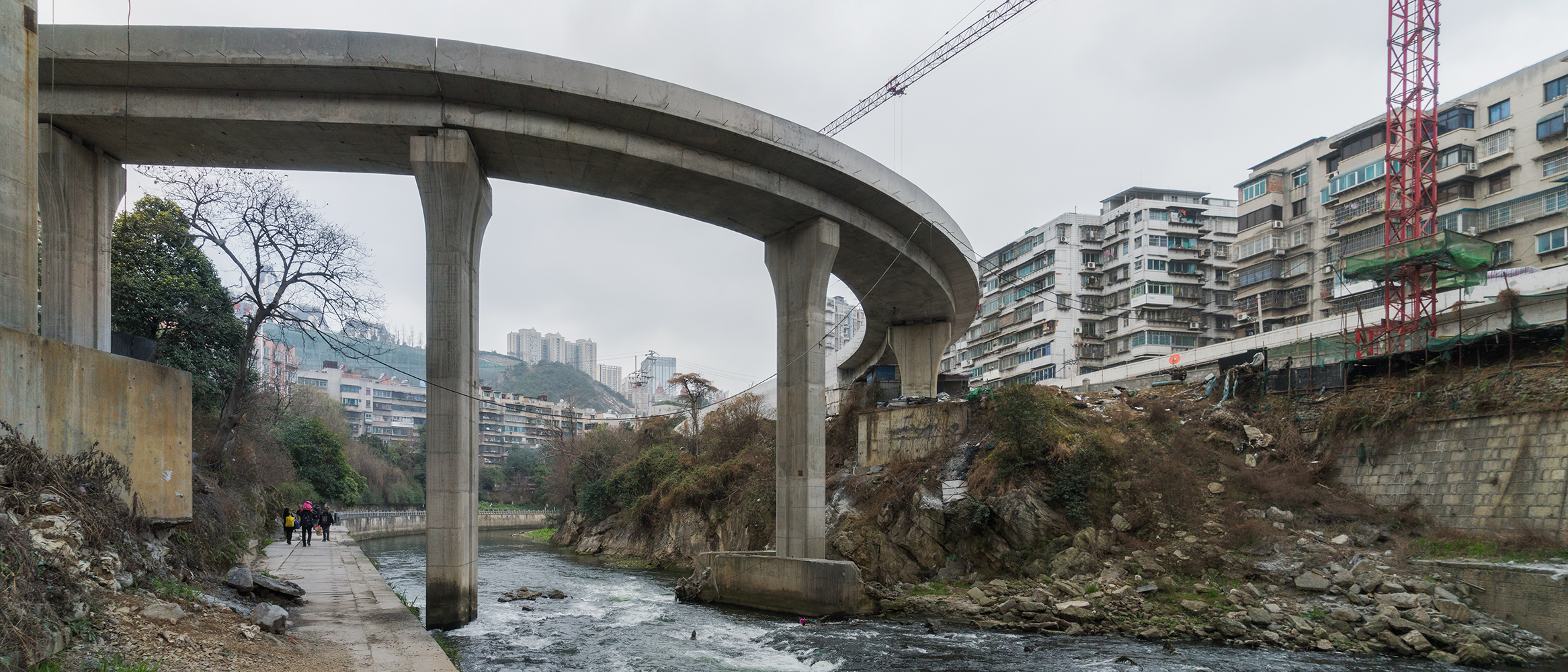State-less 無國界 – Kakilang / Two Temple Place, London
The first visual arts exhibition by the Kakilang festival team, State-less 無國界 confronts visitors with art that delves into the specificities of place and home, but also the commonalities of human experience.
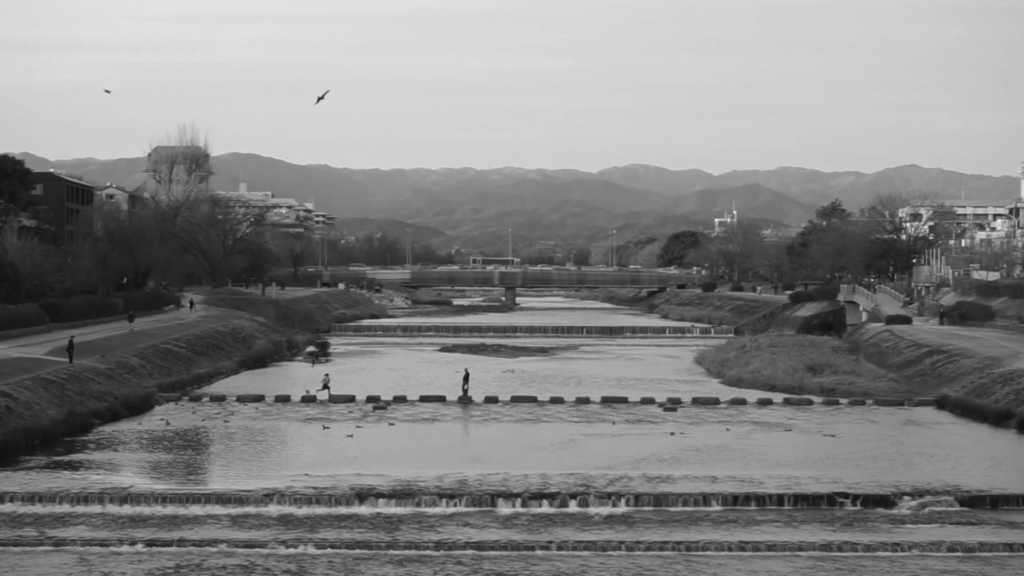
Lead image: © Wang Wei, One Belt Road, 2018.
State-less 無國界
Kakilang festival is in full swing! Regular readers will remember my review of HOME X some weeks ago, a global event which blended virtual reality and digital experience with live dance and music. Since then, companies and performers have been presenting events around London under the Kakilang banner. Kakilang, formerly Chinese Arts Now, celebrates work by artists of East and South East Asian heritage. Events continue through to 22 April so check out the website here.
Normally a performing arts festival, new for Kakilang in 2023 is a visual arts component. The aim is the same: to showcase experiences and artistic perspectives from across East/South East Asia. The exhibition format is an opportunity to share the work of a number of acclaimed artists with a UK audience. State-less 無國界 brings together ten visual artists who reflect on “the tangible borders and invisible boundaries that define their identities.” It includes artists who have exhibited at the Venice Biennale and major institutions in the US, Europe and Asia.
As with Kakilang more broadly, place is very important to State-less 無國界. The exhibition takes over Two Temple Place, a mansion built originally for William Waldorf Astor near Temple station. Take a look at my previous posts for all the details, but essentially Two Temple Place is a sort of neo-Gothic, European fantasy built for the scion of one of America’s wealthiest families. Placing art by contemporary East and South East Asian artists here is a fascinating juxtaposition, and a challenge which the curatorial team have more than risen to.
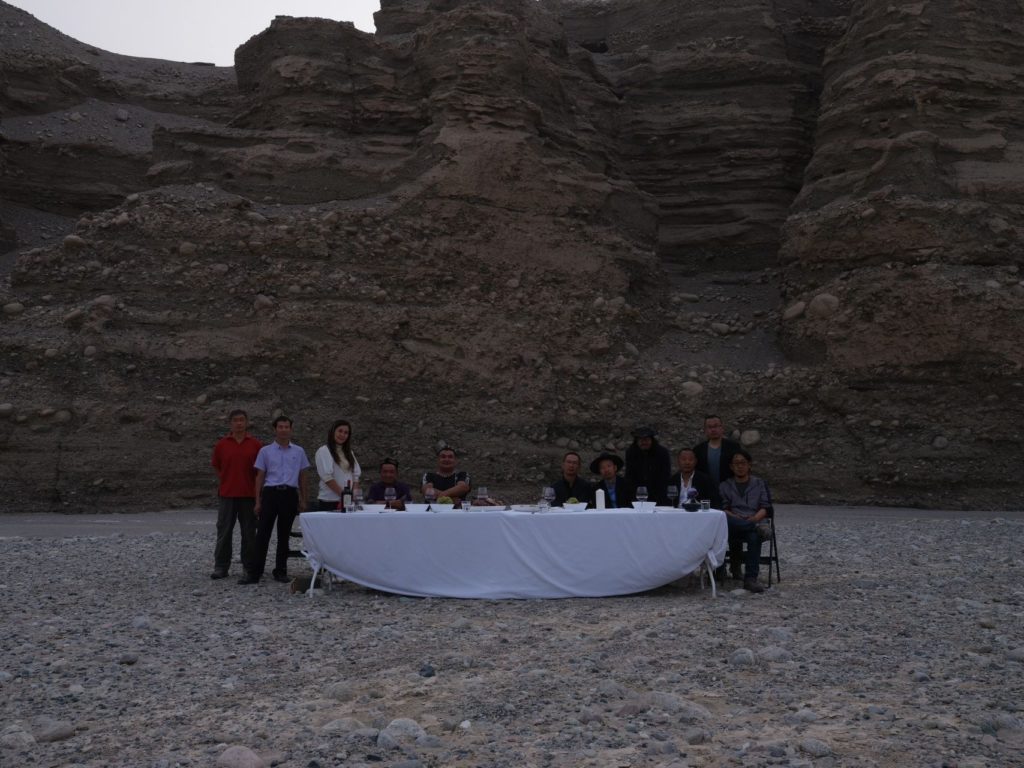
An Experience Of Place
I received excellent advice when visiting State-less 無國界, which I am passing on to you here. This exhibition is best experienced if you challenge yourself to really take in the artworks first without reading the text panels. It’s relatively easy if you see that the artist or the subject is connected to Vietnam, Taiwan, Japan, Xinjiang, to fill in gaps with your preconceived ideas. Maybe you’ve been there. Maybe you’ve read about it. But I recommend holding off on ‘situating’ the artworks at first for two reasons.
Firstly, the artists in State-less 無國界 are taking you far beyond the realms of tourists in these regions. Clouding your experience of them with received wisdom or memories will not do you any favours. And secondly, experiencing the art without knowing the place that you’re looking at helps you as a visitor to focus on what we have in common rather than what is different. I really enjoyed exploring the spaces of this exhibition first, and then going back to read the texts and gain new insights. Two Temple Place is a very manageable size so this is not an arduous task if you choose to follow in my footsteps.
You will also get an opportunity to appreciate the excellent exhibition design from all angles. As I mentioned earlier, Two Temple place is not where you would usually expect to find contemporary Asian art. The venue and the Kakilang team collaborated closely on this exhibition, and devised a way to manage this ‘intervention’ in the neo-Gothic space. Scaffolding frames cleverly embrace the artworks, creating distance between the highly decorated surfaces and the clean lines of contemporary art. In some ways it’s a reflection of how people in many Asian countries have managed a legacy of colonial architecture and rethought what it means for them today.
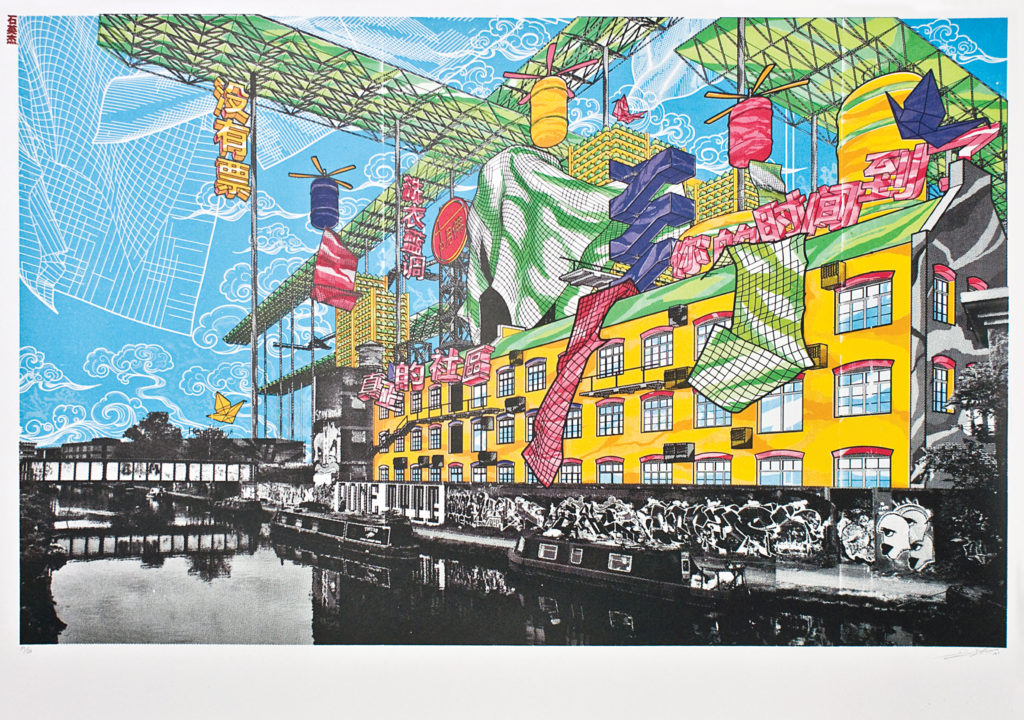
What About The Art?
Yes ok, this has been a lot of discussion so far of the exhibition. What about the art itself? There are some really great works on display. Some I appreciated for their glimpses into a very concrete sense of place. I would include amongst these Wu Tsan-Cheng’s 2011 Taiwan Sound Map Project, a collection of geo-located soundscapes that viewers can click through at leisure, listening to people, cities and nature across time and space. It’s the sort of thing you could really get into and spend hours listening to. A very different experience but a similarly vivid sense of place is provided by Li Yongzheng’s 2021 Feast. This dual screen video takes the viewer into the beautiful but (physically and politically) inaccessible deserts of Xinjiang. Structured around a shared meal, Feast is an intimate way to experience somewhere most of us will never go.
Other artworks start with an aim of imparting specific knowledge. Here we can include Law Yuk-Mui’s 2021 River Atlas. Law became interested in the similarities between the (English) names of rivers in Hong Kong and India. Her research revealed the colonial forces at play in this process, with for instance Indian illustrators deployed to document landscapes and rivers. Law’s approach brings this documentary desire up to date, combining drone footage with a sound installation. Tiffany Chung’s 2017 km 0 – Son’s story is the most purely documentary work on view. Chung, known for her research-based practice, makes visible the long struggle of around 450,000 ethnic Chinese Vietnamese people visible through the experiences of one individual, Son, who spent decades seeking a place in the world after being expelled from Vietnam in the late 1970s.
There are also those artworks which use playfulness to subvert our expectations. Many of these are gathered under the theme ‘React’ – East and South East Asian artists’ responses to the UK. Donald Shek, a British second-generation immigrant from Hong Kong, plays with recognisable London landscapes, superimposing fantasy, colourful cityscapes over top of black and white images. And I recommend watching the entirety of Tsui Kuang-Yu’s The Shortcut to the Systematic Life: City Spirits. In it, Tsui surfaces all of the unwritten rules about how we use urban spaces by breaking them. He tees up golf shots on public lawns, and sends a bowling ball flying towards pigeons. It’s so whimsical it had me laughing and chatting with fellow visitors.
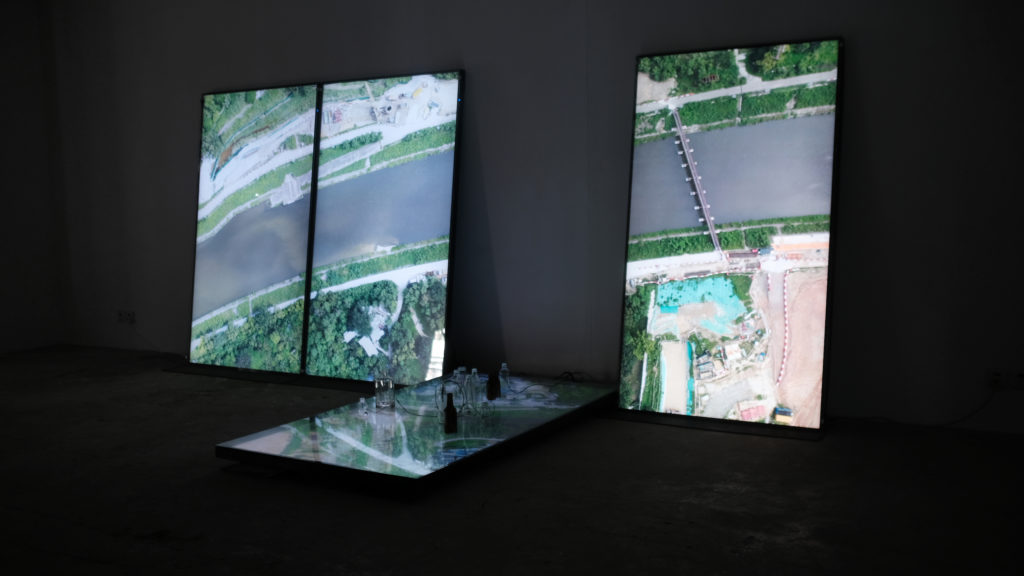
Final Thoughts On State-less 無國界
This foray into visual arts certainly seems to have paid off for the Kakilang team. State-less 無國界 is well-curated (thanks to Ling Tan), a thought-provoking exhibition which complements the themes and aims of the festival at large. It’s an excellent opportunity to get to know cutting-edge East and South East Asian artists. Plus also a masterclass in creative exhibition design.
State-less 無國界 is also designed to be accessible at several levels. Firstly Two Temple Place, despite being a historic building, is physically accessible – great! Once inside, there is ample and comfortable seating for visitors taking in video or computer-based works. It might sound like a given but I’ve been to some exhibitions recently where I would have stayed longer if I could have sat down to contemplate the works. And the wall texts, in both English and Traditional Chinese, are pitched well to include key information without assuming prior knowledge.
Finally, State-less 無國界 is free to visit. So it’s a wonderful opportunity, whether you are interested in contemporary Asian art, would like to branch out from the performing arts side of Kakilang, or fancy a look around Two Temple Place. A series of (mostly paid) in person and online events supplements the exhibition, see more details here.
Salterton Arts Review’s rating: 4/5
State-less 無國界 on until 9 April 2023
Trending
If you see this after your page is loaded completely, leafletJS files are missing.

